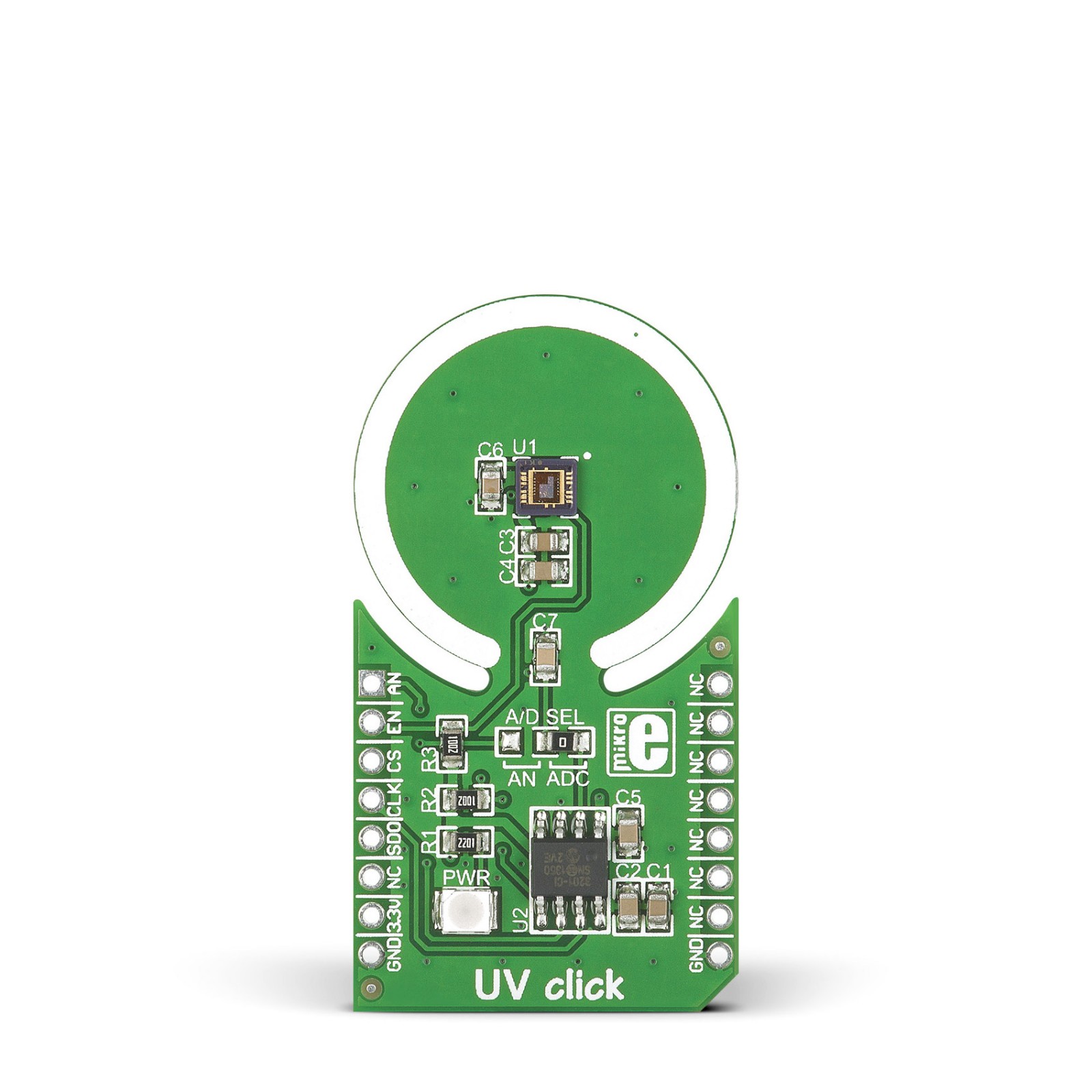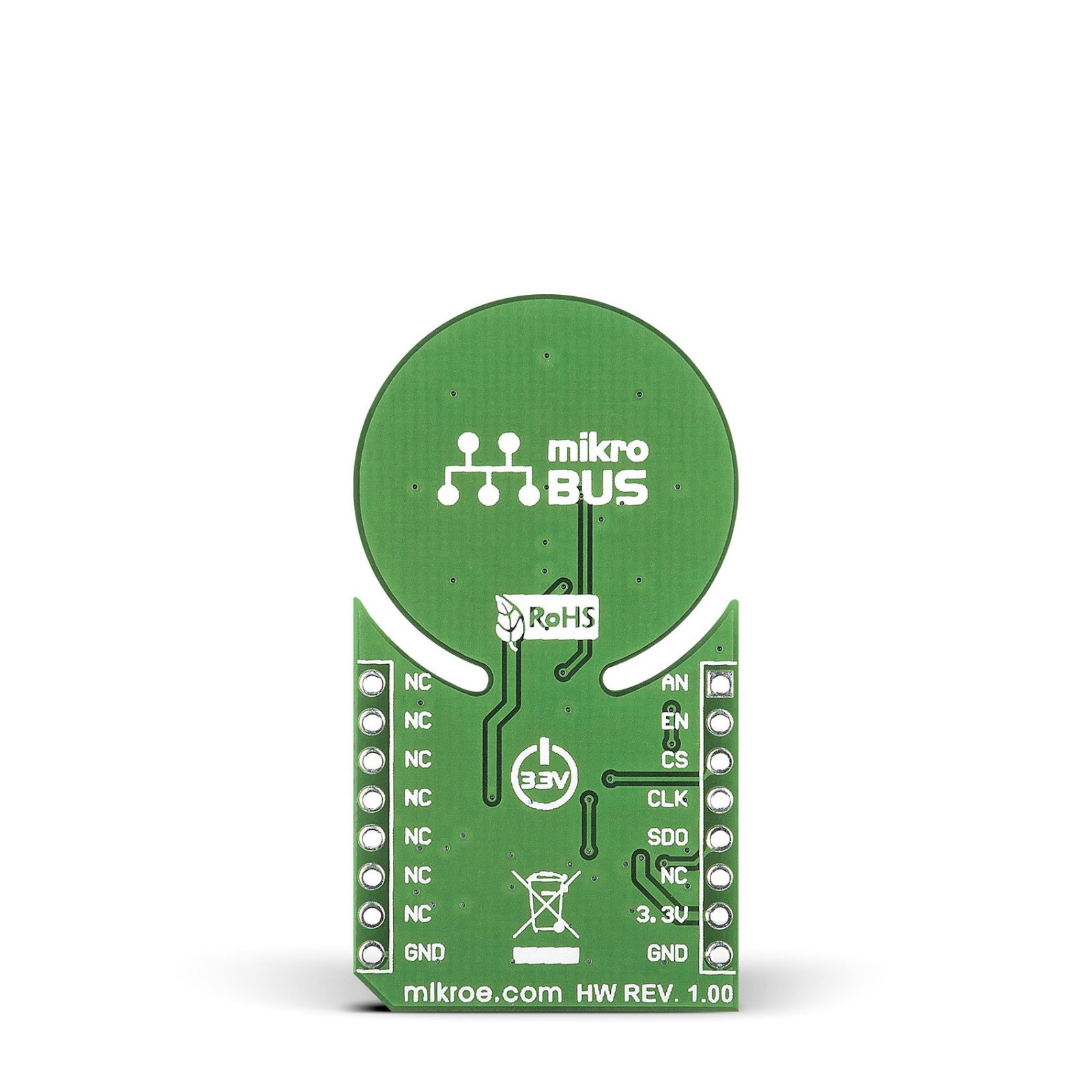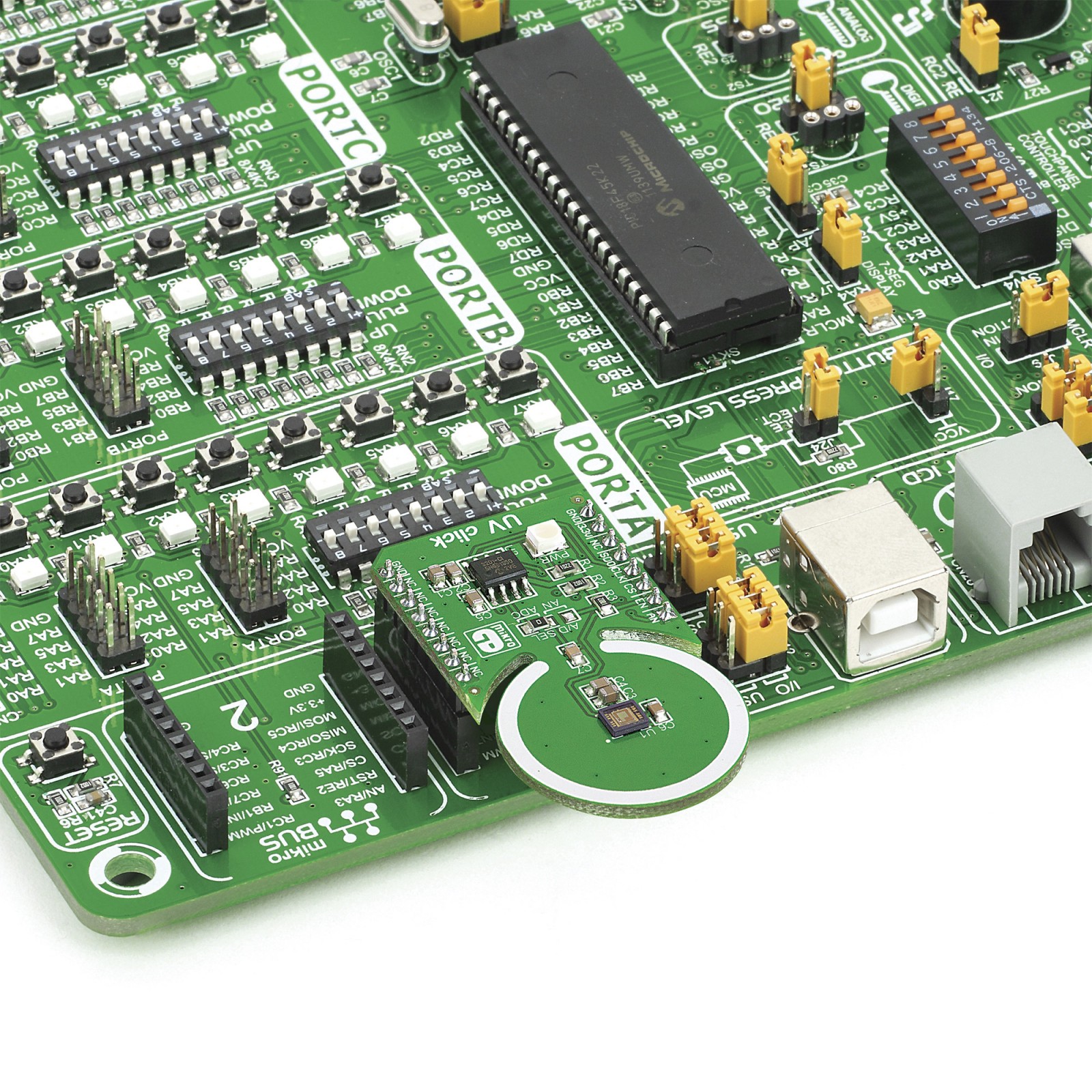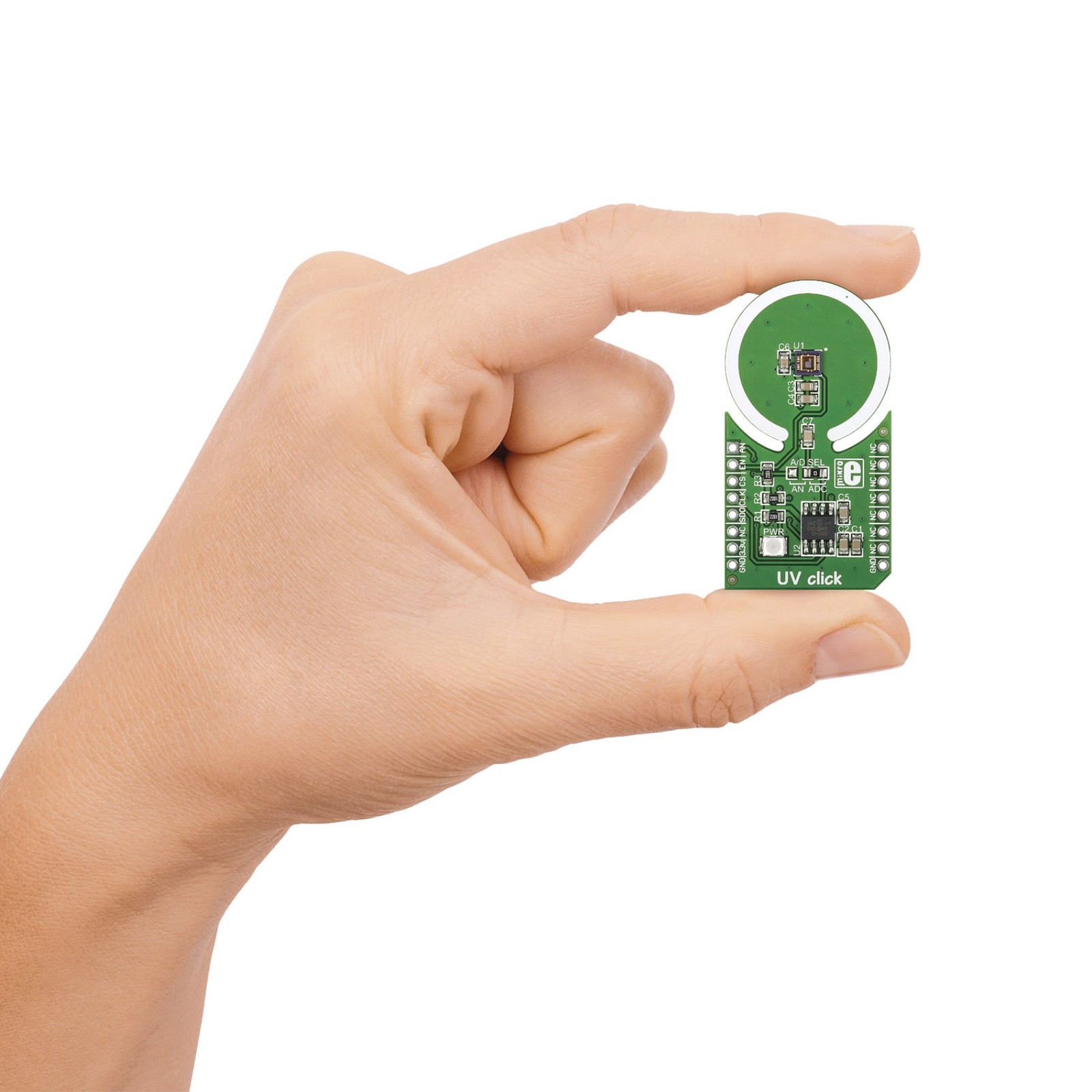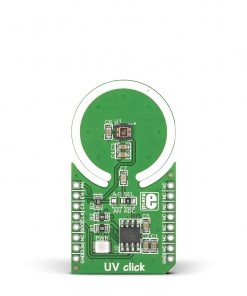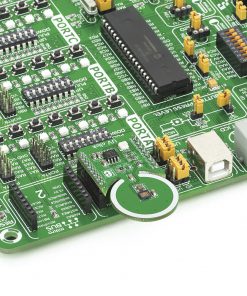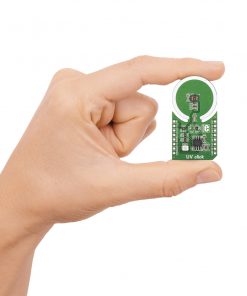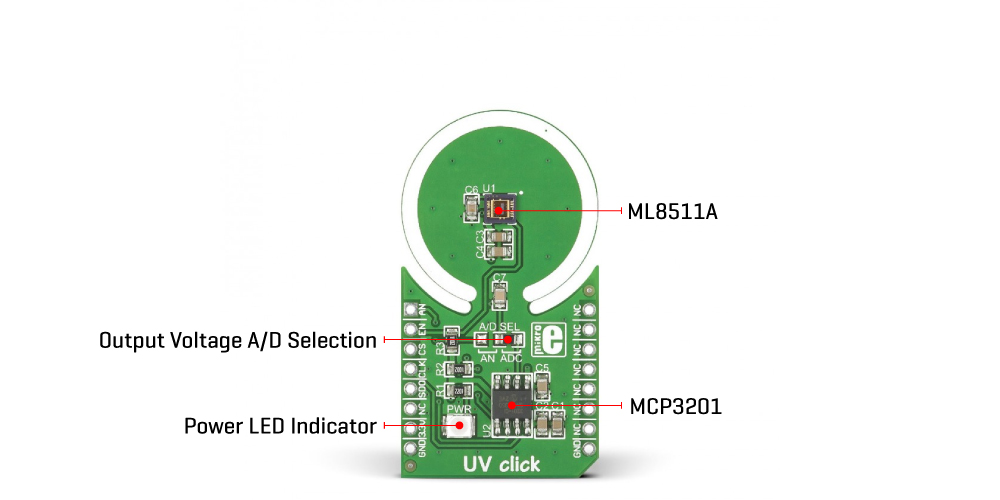UV Click
R545.00 ex. VAT
UV Click is a compact add-on board that alerts users of excessive ultraviolet radiation levels. This board features the ML8511A, an ultraviolet light sensor suitable for acquiring UV intensity indoors or outdoors from Rohm Semiconductor. The ML8511A is equipped with an internal amplifier converting photocurrent to voltage depending on the UV intensity working with a wavelength between 280-390nm. It outputs an analog voltage linearly related to the measured UV intensity (mW/cm2), which can be later processed in analog or digital form. Also, the power consumption can be reduced using the available power management mode. This Click board™ is suitable for various applications, such as determining exposure to ultraviolet radiation in a laboratory or environmental settings, weather stations, industrial manufacturing, and many more.
UV Click is supported by a mikroSDK compliant library, which includes functions that simplify software development. This Click board™ comes as a fully tested product, ready to be used on a system equipped with the mikroBUS™ socket.
Stock: Lead-time applicable.
| 5+ | R517.75 |
| 10+ | R490.50 |
| 15+ | R463.25 |
| 20+ | R445.81 |

